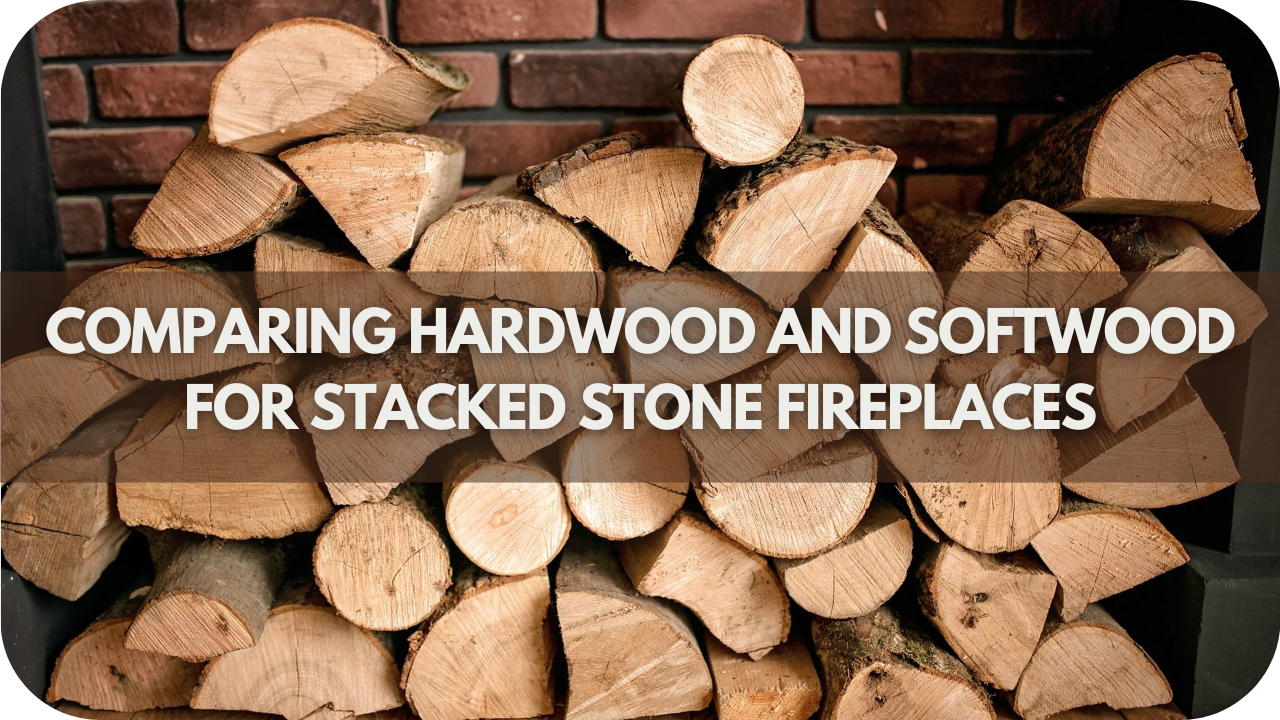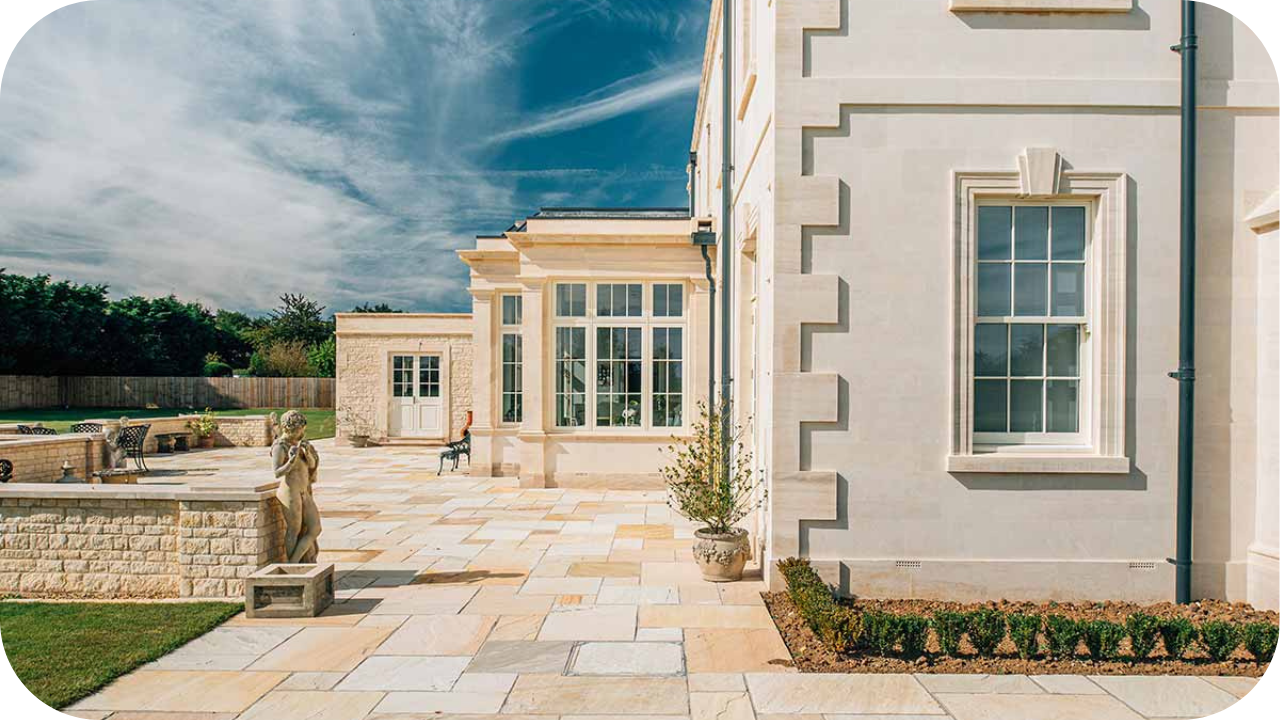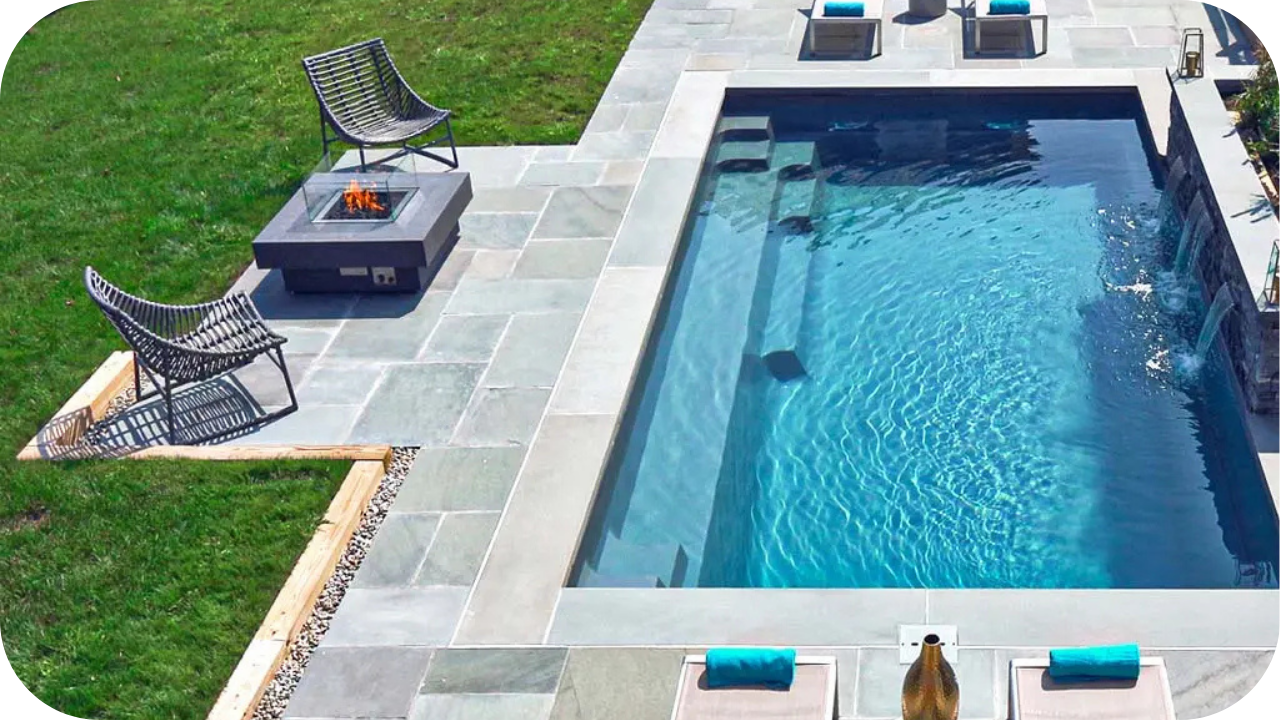
Choosing the right wood type for your stacked stone fireplace can be daunting. The wrong choice could lead to issues like inadequate heat performance, higher maintenance, or mismatched aesthetics, leaving you dissatisfied with your fireplace.
In this article, we’ll compare hardwood and softwood, helping you make an informed decision that enhances the function and beauty of your stacked stone fireplace.
Hardwood vs Softwood
Choosing between hardwood and softwood for your stacked stone fireplace involves more than appearance. Hardwood, known for its density, burns longer and produces more heat.
Softwood, on the other hand, ignites faster but burns quickly, requiring more frequent refuelling. But does that mean hardwood is always the better choice?
Softwood is often more affordable and accessible to source, making it appealing for those seeking convenience. In contrast, hardwood’s slow burn makes it ideal for maintaining a consistent heat level, especially during colder months. Maintenance needs also differ.
Hardwood produces less creosote, reducing the frequency of chimney cleaning, while softwood can lead to more residue and smoke.
Ultimately, the decision depends on your priorities. Want less hassle and fewer refuelling sessions? Hardwood may be the answer. Are you looking for a quicker start and lower cost? Softwood could be your go-to option.
If hardwood seems the right choice, explore our guide on Top Hardwood Choices for Efficient Burning in a Stacked Stone Fireplace to discover the best options for your home.
Heat Performance and Durability
Understanding the heat performance and durability of hardwood versus softwood is crucial when selecting the suitable wood for a stacked stone fireplace.
Hardwood, known for its density and compact grain structure, excels in both these aspects. Its dense nature allows it to burn more slowly and evenly, providing a consistent and long-lasting heat source.
This makes hardwood ideal for fireplaces where sustained warmth is desired. Additionally, hardwood’s durability means it can withstand the high temperatures and frequent use associated with fireplaces without degrading or warping over time.
In contrast, softwood, with its lighter and less dense structure, burns more quickly and at a lower temperature.
While this can be advantageous for kindling and quicker ignition, it may provide a shorter heat than hardwood offers.
Softwood is also more susceptible to wear and tear from heat, which can result in more frequent maintenance or replacement if used in high-temperature settings like fireplaces.
If heat retention and long-term durability are priorities, hardwood is the superior choice. However, if ease of handling and initial cost are more critical, softwood can still be a viable option, considering its limitations.
Aesthetic Considerations
The choice between hardwood and softwood for your stacked stone fireplace significantly impacts the overall aesthetic of your space.
Hardwood, with its rich and varied tones, offers a timeless elegance that can enhance the visual appeal of your fireplace.
The intricate grain patterns found in woods like oak, walnut, and cherry add depth and luxury, making hardwood a popular choice for creating a focal point in a room.
Hardwood’s ability to be stained or polished to a high sheen further adds to its versatility, complementing traditional and modern interiors.
On the other hand, softwood provides a more understated, natural look. Woods like pine and cedar have lighter tones and simpler grain patterns, which can create a warm, inviting atmosphere.
Softwood’s rustic charm is particularly well-suited to country-style or minimalist designs, emphasising simplicity and natural beauty.
However, it’s worth noting that softwood may require more frequent maintenance to preserve its appearance, especially in high-heat environments.
Cost Comparison
Cost significantly influences your decision when comparing hardwood and softwood for a stacked stone fireplace.
Due to its density, durability, and slower growth rate, hardwood typically has a higher price tag. Woods like oak, maple, and walnut are considered premium materials, and their cost reflects their quality and longevity.
This investment can be worthwhile if you’re looking for a material that offers superior heat resistance and long-term durability, as hardwood requires less frequent replacement.
In contrast, softwood is generally more affordable. Species like pine, spruce, and cedar grow faster and are more readily available, which drives down their cost. This makes softwood an attractive option for those working within a budget or for projects where cost efficiency is a priority.
However, the lower initial cost may be offset by the need for frequent maintenance or replacement, especially if the softwood is regularly exposed to a fireplace’s high heat.
Environmental Impact
The environmental impact of choosing between hardwood and softwood for your stacked stone fireplace is an essential consideration for eco-conscious homeowners.
Hardwood, sourced from deciduous trees that grow slowly, often has a larger environmental footprint. The longer growth cycle of hardwood trees means deforestation can have more lasting effects on forests.
However, sustainably sourced hardwood, certified by organisations like the Forest Stewardship Council (FSC), can mitigate some of these concerns by ensuring responsible forestry practices.
Conversely, softwood comes from faster-growing coniferous trees, making it a more renewable resource. The quicker growth cycle means that forests can regenerate more rapidly, reducing environmental impact.
Additionally, the production of softwood generally requires less energy, further reducing its carbon footprint.
However, it’s essential to consider the entire lifecycle of the wood. While more renewable, softwood may require more frequent replacement due to its lower durability, potentially leading to greater resource use over time.
In contrast, hardwood’s longevity might offset its initial environmental impact, mainly if it’s sustainably sourced and adequately maintained.
Maintenance Requirements
Maintenance is crucial when deciding between hardwood and softwood for your stacked stone fireplace. Hardwood, known for its durability and dense structure, requires less frequent maintenance.
Its resistance to wear and heat damage means hardwood can maintain its appearance and structural integrity once installed with minimal upkeep. Regular dusting and occasional polishing are typically sufficient to preserve its finish, and any minor scratches or blemishes can often be sanded out and refinished.
While more affordable, softwood demands more attention to maintain its appearance and longevity. Due to its lighter and less dense nature, softwood is more susceptible to dents, scratches, and heat damage.
This means it may need more frequent refinishing to keep it looking its best. Additionally, softwood can be more prone to warping or cracking in response to the heat produced by a fireplace, necessitating regular inspections and potential repairs.
To extend the life of either wood type, it’s essential to maintain a stable indoor environment with controlled humidity and temperature levels. Proper sealing and treatment can also help protect the wood from heat and moisture, ensuring your fireplace remains a beautiful and functional feature.
Conclusion
In choosing between hardwood and softwood for your stacked stone fireplace, consider your priorities—durability, aesthetics, cost, or environmental impact.
Hardwood offers long-term value and a refined look, while softwood provides affordability and a rustic charm. For the best home choice, consult a professional for personalised advice and installation.
More To Explore

Luxury Looks: Styling Stone in Contemporary Homes
Stone has long been associated with luxury, and in contemporary homes, it brings sophistication and timeless charm. From sleek marble countertops to the warmth of

Is Bluestone Ideal for Pool Surrounds?
When choosing the right material for your pool surrounds, Bluestone is a top contender due to its durability, aesthetic appeal, and practicality. Bluestone is known


